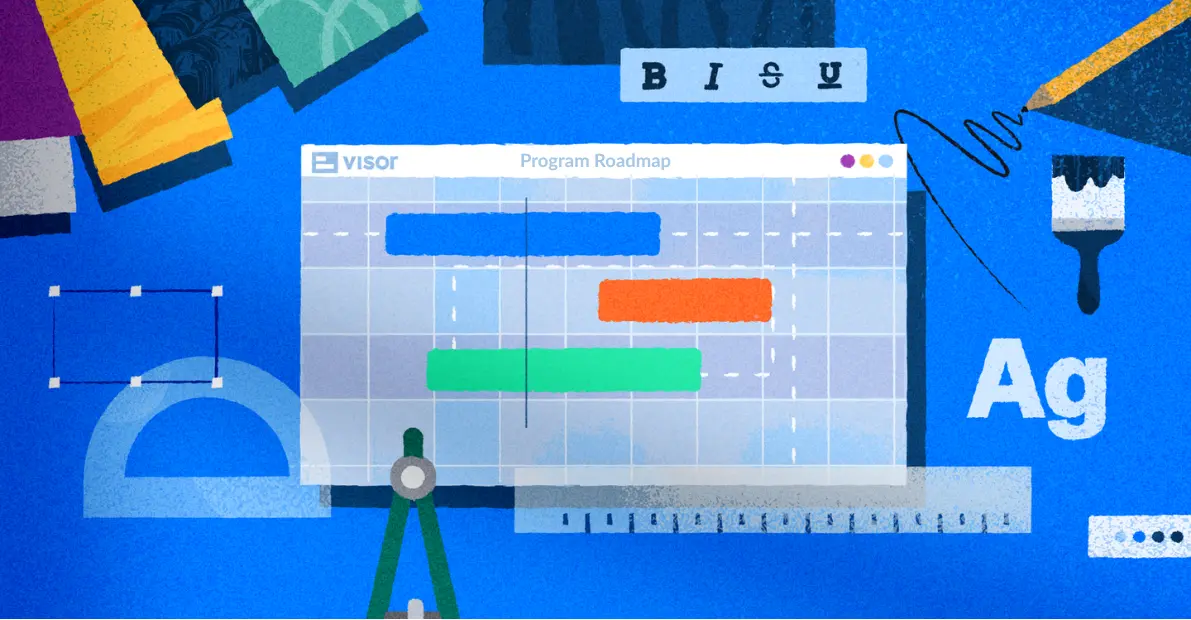
Improving Agile Retrospectives With The 5 Whys Technique
If your agile retrospectives aren’t getting results, it may be time for your team to ask why.
Literally.
The 5 Whys are a tool frequently used in root cause analysis, but they can add plenty of insights into your regular retrospectives, too. If you’re looking for a quick and easy way to analyze issues with your team, take a look at how you can incorporate the 5 Whys into your retrospectives.
In this post, we’ll cover:
- What the 5 Whys Technique is
- How to include the 5 Whys in retrospectives
- 5 Whys best practices
Want to figure out where a problem is coming from? You need data. Visor gives you an easy way to share data with stakeholders throughout your organization. Try Visor for free and get started with our free sprint retrospective template to bring clarity and focus to your regular retrospectives.
What are agile retrospectives?
Agile retrospectives are formally structured meetings run by teams using agile methodology. These meetings occur at the end of each sprint and give the team the opportunity to reflect on the completed sprint, what went well and what could’ve gone better.
Agile retrospectives are not just talking shops. The key to successful agile retrospectives is to attach an action to each insight, to ensure the learnings from each sprint are used to improve the next and all future sprints.
Agile Retrospectives: Key Questions
Agile retrospectives work best when grouped into structured sections based on a key question. The team member running the meeting opens the section, the team contributes, and collectively discuss and make recommendations for follow up actions or insights to record.
The key questions you should ask in agile retrospectives are:
- What went well?
- What didn’t go well?
- What can we try next?
- What did we find confusing or confounding that we want to dig deeper into to clarify?
Each question should be covered as an independent section, rather than hopping between examples of what went well, what didn’t go well, and back again.
Agile Retrospectives – Best Practices
Here are some simple, best practice principles that will help you get the most out of your agile retrospectives:
- No blame game – this is an opportunity to learn, everyone should feel confident to share mistakes or misgivings without fear of consequences.
- Switch the meeting lead – Give everyone an opportunity to play the role of meeting coordinator and meeting contributor
- Record contributions and actions – Keep a record (usually made during the meeting itself) of people’s insights and any actions agreed upon
- One question at a time – Don’t hop between each of the four questions above. It’s OK to go back and add more later, but try and cover each question distinctly to maximize the number of contributions to each and keep discussions on track.
- Improve the format – Take the opportunity to seek feedback on the practice of the retrospective itself, to see how you can make it better.
What is the 5 Whys Technique?
The 5 Whys is a simple problem-solving tool that lets your inner child out to play. The gist of it is you and your team drill down into and analyze the root cause of an issue (or a success) by asking “Why?”
The idea was developed by Toyota Founder Sakicki Toyoda to be used for problem solving training. By asking why again and again, he found his teams could get beyond the symptoms of a problem to find the underlying causes of an issue.
Why Use the 5 Whys in Agile Retrospectives?
The whole point of agile retrospectives is to let teams reflect on their processes and outcomes. The 5 Whys technique fits seamlessly into this context, letting teams:
- Identify and address the root causes of recurring issues or successes.
- Promote deeper understanding and learning.
- Encourage a mindset of continuous improvement.
- Foster open communication and collaboration.
Steps to Apply the 5 Whys in Agile Retrospectives
If you’ve never tried the 5 Whys before, it’s easy to learn. Here’s how to run this exercise in your next retrospective:
1. Identify the Problem
Begin the retrospective by identifying a specific issue or challenge the team faced during the sprint. This could be anything from a missed deadline to a recurring defect in the code. Clearly define the problem statement to ensure everyone is on the same page.
By the way, you can run the same exercise to break down a success your team experienced, too. Say you were able to turn in a project ahead of deadline – you can use the 5 Whys to figure out what went right so you can replicate your success again.
2. Assemble the Team
Gather the entire team for the retrospective. By involving all team members, you ensure you’re getting diverse perspectives. It also fosters a sense of collective ownership of the problem-solving process, empowering them to find a solution.
Team capacity swimlanes on an Agile Kanban using the Kanban board view in Visor:

3. Ask “Why?” Five Times
Start with the identified problem and ask “Why did this happen?” Write down the answer and then ask “Why?” again based on the previous answer. Repeat this process multiple times, each time probing deeper into the cause of the previous answer. Here’s an example:
- Problem: The deployment failed.
- Why? The server ran out of disk space.
- Why? Logs were not being rotated.
- Why? The log rotation script was not running.
- Why? The cron job was misconfigured.
- Why? The configuration file was overwritten during a recent update.
Note: While the name of the exercise is the 5 Whys, you may need more or less than five whys to actually get your answer. Don’t give up if you’re not at your answer yet!
4. Analyze the Findings
Once you have gotten to your last why, take a look at the final answer. Congratulations! You’ve likely found the root cause of the problem.
This is a place where you’re best able to verify your findings with data, now that you know what you’re looking for. Pulling specific numbers is easy with Visor’s Dashboard view, which automatically pulls percentages, counts, and creates easy to understand charts in just a few clicks.
Dashboard options in Visor:

5. Develop an Action Plan
Once you’ve figured out the root cause, it’s time to brainstorm potential solutions and develop an action plan to address it. Take time to assign specific tasks to team members and set deadlines to ensure accountability. You should also document the action items you come up with and follow up on them in later retrospectives.
6. Reflect and Learn
At the end of the retrospective, take a moment to reflect on the process itself. Discuss what went well and what could be improved in the application of the 5 Whys technique. These meta-reflections help the team improve their problem-solving skills and make sure future retrospectives are even more effective.
Tips for Using the 5 Whys in Retrospectives
- Stay Focused: Keep the discussion focused on the specific problem at hand. Avoid getting distracted by unrelated issues.
- Be Honest: Encourage team members to be honest and open in their responses. Creating a safe environment for candid discussion is crucial. You won’t be able to get an accurate answer if your team is afraid to speak up.
- Avoid Blame: On that note, make sure you’re focusing on the process and system, not individuals. The goal is to identify and address root causes, not to assign blame. It’ll help your team feel safe enough to share their minds.
- Document the Process: Want to prevent a problem from recurring? Document. Document. Document. Keep a record of the 5 Whys analysis and the resulting action plan so that you know what you did and let it inform what you do in the future.
Powering Your Agile Retrospective with Data
Agile retrospectives are designed to help you improve the way your team functions. The 5 Whys help you spot problems, making it easier to achieve your goals. Together they make a powerful team, giving you the insights you need to streamline processes.
Most agile teams use Jira to manage their projects. Another tool to add to your team? Visor. Visor offers an accessible way to share the data you need during your next retrospective with everyone on – and off – your team. Try Visor for free and find out how it can add the data you need to your next retro.
Try Visor for free today to build in more effective problem-solving and data-driven decision-making into your team. In addition to Visor’s two-way integrations with apps like Jira and Asana, Visor also offers agile templates for product backlog refinement and even templates for agile roadmaps. And you can always try out Visor for free.





